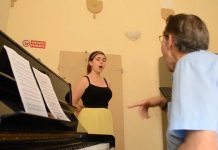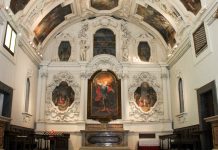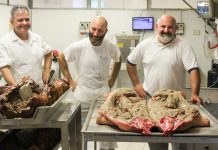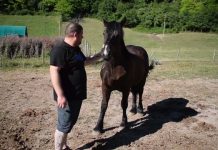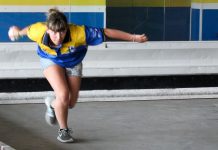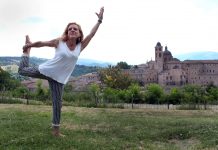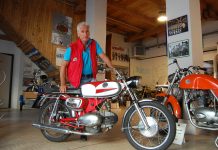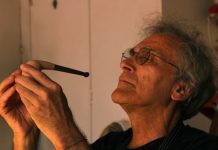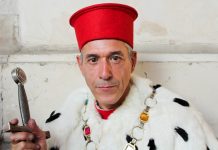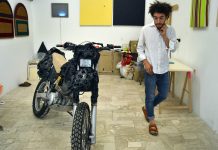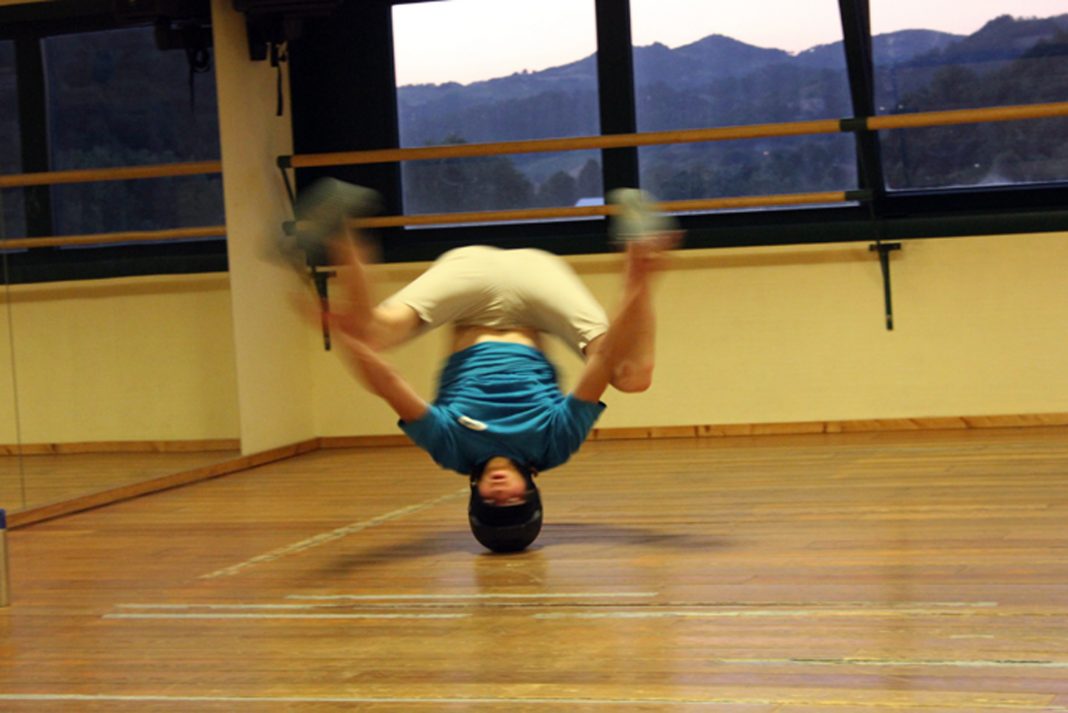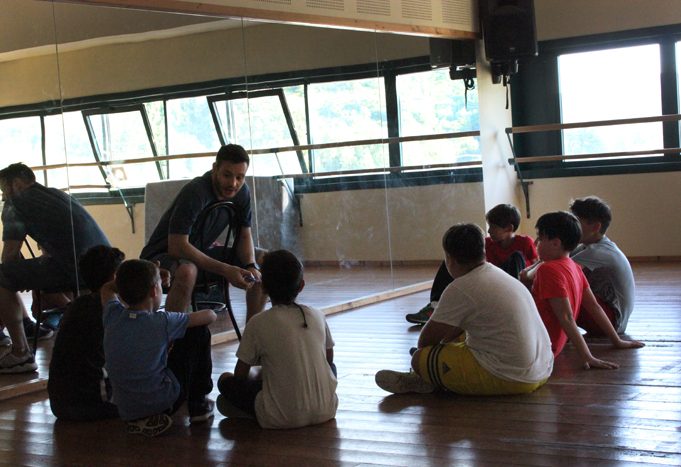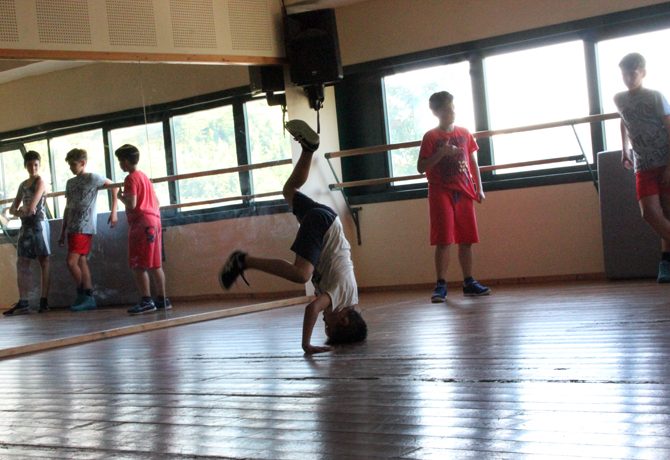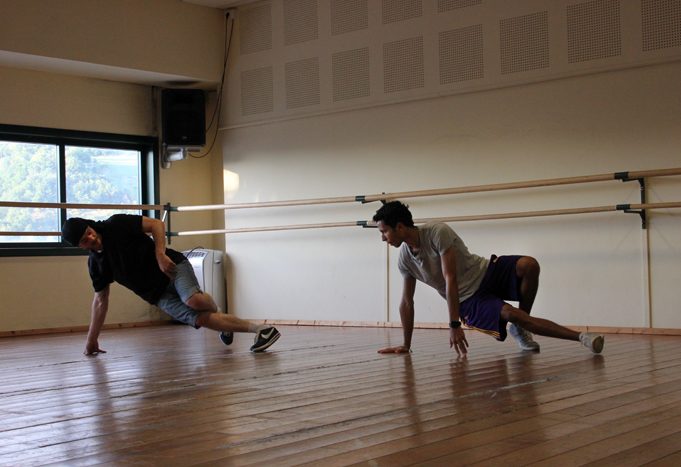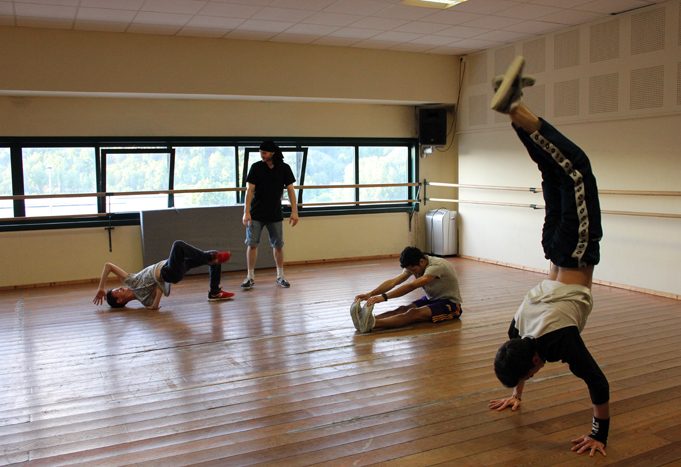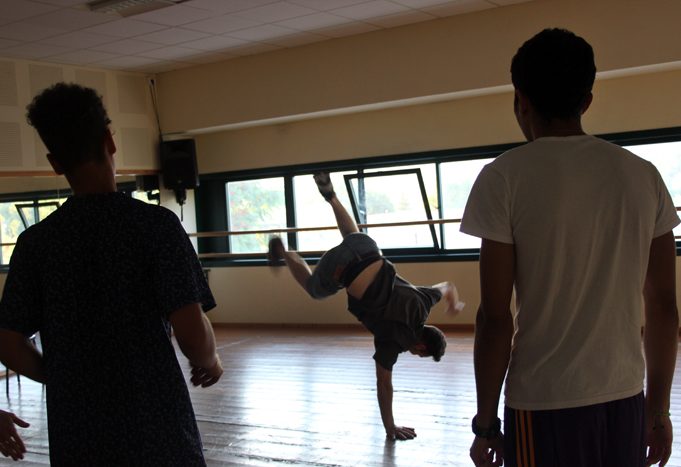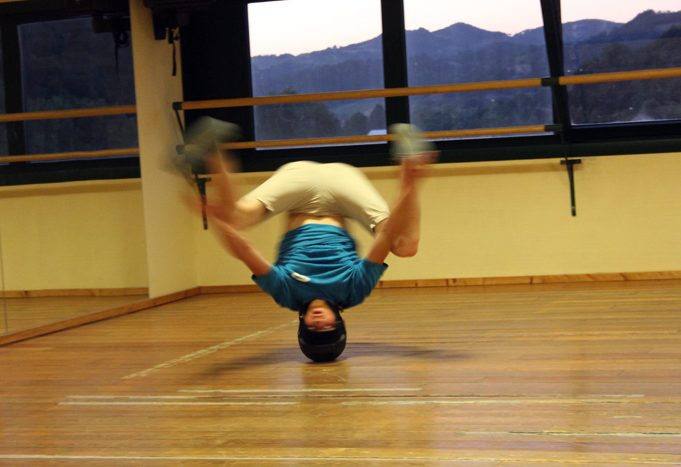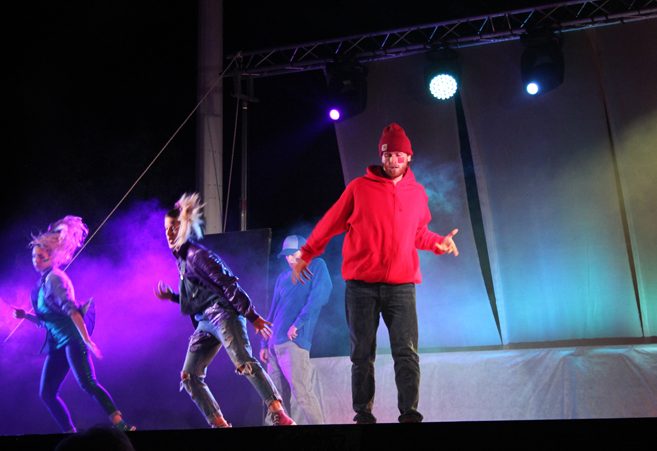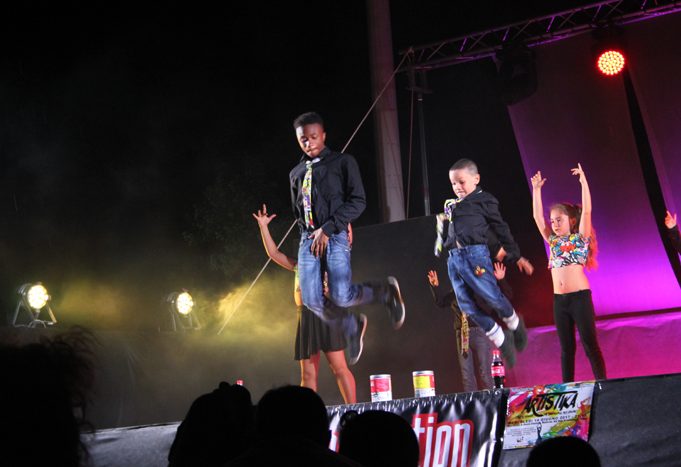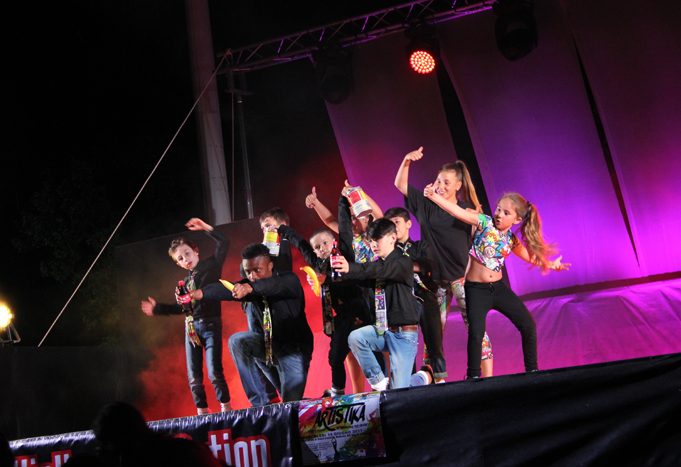Breakdancing helps young Italians channel their energies and find their true passions
The air of the early June night is still and warm in Pesaro’s Piazza Europa. Vincent Van Gogh’s Starry Night appears on the giant screen to the right of the stage, drawing the audience’s attention with its eerie black mountain and white-ish swirls above blue rolling hills. Suddenly, the stage is aglow with blue and yellow lights, upbeat music is blaring, and dancers rush out, clad in similar colors of the classic impressionism painting. For two and a half minutes everyone is captivated, watching the syncopated body rolls and sharp arm movements. The guys and girls on stage spin their legs around in intricate circles while supporting themselves on their hands—and the audience’s eyes are as starry as the painting the group is dancing about.
The performance is one of 20 routines being presented tonight at a four-hour recital by the Hip Hop Connection, an active dance center in Pesaro. Breakdancing is clearly alive and thriving in this part of Italy. “The popularity of breakdancing is really just spread through word of mouth,” says Laura Giorgi, manager of Hip Hop Connection. All around the area are dance schools that teach classes specifically for breakdancing and present performances every summer to showcase the talent of students of all ages. Doing flips in the air and spinning on one’s head without using any hands is just as important today in Italy as it was in the ’70s when it burst onto the scene in the Bronx, New York.
Twenty-three miles southwest of Pesaro in a neighborhood in the countryside of Urbania sits an industrial-looking building with a metal staircase and a sign made out of thin string lights, barely noticeable during the day. Inside, the wood floor creaks with every foot stomp and the light coming in through the old window bounces from the dancers’ backs in the June heat. The warm environment is unnoticed by the group of 7- to 12-year-old breakdancers attending class at La Scuola di Danza—Etoile, or L’Etoile School of Dance. Founded in 1983, L’Etoile is a school for students of all ages offering several forms of dance—but most interestingly, breakdance.

Andrea Coacci, breakdancing instructor at L’Etoile, sits in a black chair in front of the wall-to-wall mirror at the head of the classroom, anxious to review the group’s performance for the recitals coming up in the following week. A familiar circus tune blares through the two speakers on either side of the room and the boys are off, running to the center of the floor, spinning on the ground and doing handstands to the backbeats of the music. The routine continues until a dramatic finish in which each of the boys stands proudly with arms crossed in front of his chest.
The class ends and the kids take turns fist-bumping their teacher on their way out the door. Coacci walks over, sits down on the creaky wooden floor, and tries to explain how breakdancing became such a big part of his life.
He was 14 when a friend brought him to a hangout where the guys were taking turns freestyle breakdancing for an impromptu audience. He says he joined instinctively, without a second thought.
Coacci says he continued breakdancing on his own and with friends, and it became a part of him. He discovered the hip-hop culture in Italy and from that moment on, he knew he wanted to breakdance forever. As light jazz music starts to play in the background, Coacci looks downward and recalls more about what brought him to breakdancing.
He says he was drawn to the idea of letting his guard down and just dancing. He describes the feeling of dancing as freeing, and says that feeling is what kept him dancing for so long. “It was intense and it was a way of discovering myself,” Coacci says. “It became part of my personality.”
Doing flips in the air and spinning on one’s head without using any hands is just as important today in Italy as it was in the ’70s when it burst onto the scene in the Bronx, New York.
Breakdancing started in a place of poverty, and people living in that reality had to find a way to express themselves. Coacci explains that much like the youth of the Bronx, kids in Italy need a way to concentrate their energies in a constructive way, not a destructive way.
He looks at breakdancing in the same way. Growing up, it became a way for him to do something creative with his time instead of getting into trouble.
Coacci says, “The most important thing as a teacher is to make sure the kids enjoy themselves and make a commitment to dance—as well as socialize and make connections among each other.”
He explains that dance helps the kids find their true interests, their passions, and what they want to do in life.
Coacci stands up to head back to his spot in front of the mirror as the next group of students files through the door. They are older than the previous group, clad in Converse shoes and shirts displaying various breakdancing positions. Two who come in and sit down to stretch are more than regular dance students. Gabriele Luzi, 21, and Giacomo Meliffi, 22, are members of the Urbania City Breakers.
The Urbania City Breakers was founded in 2005 by five friends who would perform at events in and around the Urbania and Urbino area. Although the group recently disbanded, Luzi and Meliffi continue their breakdancing pursuits at L’Etoile.
They warm up for the day by stretching in the corner of the room and making light conversation with the other four members of the advanced breakdancing class. These older dancers freestyle difficult moves they plan to incorporate into their upcoming routine.
As the upbeat hip hop music starts, Luzi practices standing on one hand and jumping around in a circle while waving his other hand. Meliffi grabs a black helmet from a wooden cabinet, sprays oil on it, and straps it to his head. He walks to the center of the room, gets into a handstand position, winds himself up, and lets go. In a whirlwind of blue from his shirt and yellow from his blonde hair, he spins around and around on only his head. Every jaw in the room drops.
After the hour-and-a-half class, Meliffi sits down on the floor as beads of sweat shake off his damp hair like raindrops. His eyes light up as he talks of the younger generation of breakdancers in Italy. He tells of how starting breakdancing early teaches the kids to value their natural talents. He believes it helps them discover themselves through the movements, and decide whether breakdancing is just a hobby or a foundation in their lives.

“I just hope the kids today will learn the right spirit and mentality that breakdancing takes,” he says. “I was inspired by my teacher, and I hope the same is transmitted to them.”
Back in Pesaro, the Hip Hop Connection dance school is a short walk from the bus station in a small, almost unnoticeable building. It is set back from the road, but the sheer amount of kids walking in at four o’clock on a summer afternoon draws the attention of passers-by. The crisp studio has white walls and a mural that reads, “Forget your troubles and dance.” Inside, breakdance instructor Ippolito Rossi patiently waits for his class of 8- to 13-year-olds to come rushing through the double doors, eager to start practicing.
Rossi has been a breakdancer nearly all his life and a teacher since 2003. He says he helped found Hip Hop Connection in 2003 because he wanted future students to have a place to practice and to find themselves through dance. At first, Hip Hop Connection was just a practice space. Soon it became a dance school with various classes for students aged four to 60. Rossi believes going to practice almost everyday and participating in competitions gives kids something to work for and teaches them about true passion.
That passion is on full display despite a light rain starting to come down toward the end of the recent Hip Hop Connection recital at Piazza Europa. All the dancers walk onto the brightly lit stage, hand-in-hand, to take a bow. Boys in gladiator costumes and girls in yellow tutus exchange high-fives, smiling proudly as everyone in the audience stands and claps. Months of hard work have finally come to life.
The teachers, including Rossi, come out and pat each other on the back as if to say, “We did it.” Everyone on stage poses for a group photo as the rain continues to fall. Whistles, cheers, and camera clicks can be heard.
As the dancers are about to exit, an announcer grabs the mic, smiles proudly at everyone on stage, and yells, “Forget your troubles and dance!”
Slideshow
This article also appears in Urbino Now magazine’s Arte e Cultura section. You can read all the magazine articles in print by ordering a copy from MagCloud.


